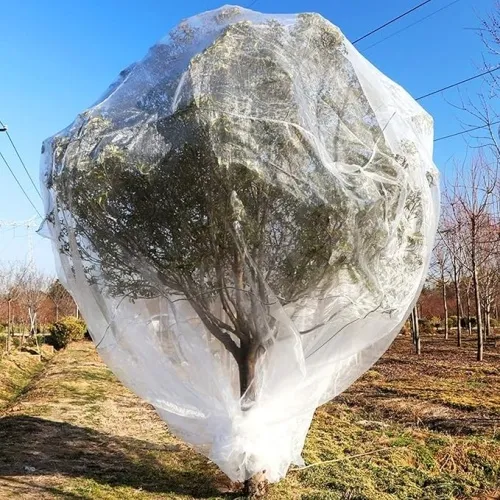-
 Afrikaans
Afrikaans -
 Albanian
Albanian -
 Amharic
Amharic -
 Arabic
Arabic -
 Armenian
Armenian -
 Azerbaijani
Azerbaijani -
 Basque
Basque -
 Belarusian
Belarusian -
 Bengali
Bengali -
 Bosnian
Bosnian -
 Bulgarian
Bulgarian -
 Catalan
Catalan -
 Cebuano
Cebuano -
 China
China -
 Corsican
Corsican -
 Croatian
Croatian -
 Czech
Czech -
 Danish
Danish -
 Dutch
Dutch -
 English
English -
 Esperanto
Esperanto -
 Estonian
Estonian -
 Finnish
Finnish -
 French
French -
 Frisian
Frisian -
 Galician
Galician -
 Georgian
Georgian -
 German
German -
 Greek
Greek -
 Gujarati
Gujarati -
 Haitian Creole
Haitian Creole -
 hausa
hausa -
 hawaiian
hawaiian -
 Hebrew
Hebrew -
 Hindi
Hindi -
 Miao
Miao -
 Hungarian
Hungarian -
 Icelandic
Icelandic -
 igbo
igbo -
 Indonesian
Indonesian -
 irish
irish -
 Italian
Italian -
 Japanese
Japanese -
 Javanese
Javanese -
 Kannada
Kannada -
 kazakh
kazakh -
 Khmer
Khmer -
 Rwandese
Rwandese -
 Korean
Korean -
 Kurdish
Kurdish -
 Kyrgyz
Kyrgyz -
 Lao
Lao -
 Latin
Latin -
 Latvian
Latvian -
 Lithuanian
Lithuanian -
 Luxembourgish
Luxembourgish -
 Macedonian
Macedonian -
 Malgashi
Malgashi -
 Malay
Malay -
 Malayalam
Malayalam -
 Maltese
Maltese -
 Maori
Maori -
 Marathi
Marathi -
 Mongolian
Mongolian -
 Myanmar
Myanmar -
 Nepali
Nepali -
 Norwegian
Norwegian -
 Norwegian
Norwegian -
 Occitan
Occitan -
 Pashto
Pashto -
 Persian
Persian -
 Polish
Polish -
 Portuguese
Portuguese -
 Punjabi
Punjabi -
 Romanian
Romanian -
 Russian
Russian -
 Samoan
Samoan -
 Scottish Gaelic
Scottish Gaelic -
 Serbian
Serbian -
 Sesotho
Sesotho -
 Shona
Shona -
 Sindhi
Sindhi -
 Sinhala
Sinhala -
 Slovak
Slovak -
 Slovenian
Slovenian -
 Somali
Somali -
 Spanish
Spanish -
 Sundanese
Sundanese -
 Swahili
Swahili -
 Swedish
Swedish -
 Tagalog
Tagalog -
 Tajik
Tajik -
 Tamil
Tamil -
 Tatar
Tatar -
 Telugu
Telugu -
 Thai
Thai -
 Turkish
Turkish -
 Turkmen
Turkmen -
 Ukrainian
Ukrainian -
 Urdu
Urdu -
 Uighur
Uighur -
 Uzbek
Uzbek -
 Vietnamese
Vietnamese -
 Welsh
Welsh -
 Bantu
Bantu -
 Yiddish
Yiddish -
 Yoruba
Yoruba -
 Zulu
Zulu
Effective Strategies for Dust Control in Construction Sites
Utilizing Dust Networks for Construction Enhancing Efficiency and Safety
In the construction industry, the management of dust emissions is becoming increasingly important due to growing environmental regulations and a heightened awareness of health impacts. Dust, particularly fine particulate matter, can pose serious risks to the health of workers and surrounding communities. To combat these challenges, innovative technologies such as Dust Networks (DustNet) are emerging as essential tools in construction management. This article explores the concept of Dust Networks, their functionalities, and the benefits they bring to the construction sector.
Dust Networks are sophisticated monitoring systems that utilize a combination of sensors, cloud computing, and data analytics to track dust levels in construction sites in real-time. These networks serve multiple purposes, from ensuring compliance with environmental regulations to safeguarding the health of workers and nearby residents. By harnessing the power of the Internet of Things (IoT), DustNets enable construction companies to manage dust emissions proactively, thereby minimizing their environmental footprint.
At the core of DustNet technology are sensors strategically placed around construction sites to measure dust particulate matter concentrations. These sensors provide continuous data on air quality, capturing fluctuations that may occur throughout the day due to different construction activities. This real-time data is transmitted to a centralized cloud-based platform where it is analyzed using algorithms to assess compliance with regulatory standards and identify potential risks.
One of the most significant benefits of implementing a Dust Network is the ability to enhance safety protocols on construction sites. Prolonged exposure to high levels of dust can lead to serious health issues, including respiratory problems, cardiovascular disease, and reduced lung function. By continuously monitoring dust levels, construction managers can take immediate action to mitigate dust emissions, such as implementing water sprays, adjusting construction practices, or modifying work schedules to reduce dust generation during peak operations. This proactive approach not only protects the health of workers but also cultivates a more responsible image for construction companies in the eyes of the public.
dust net for construction

Moreover, Dust Networks can facilitate compliance with stringent environmental regulations. With governmental agencies imposing fines for non-compliance, the cost of failing to manage dust emissions can be substantial. DustNets provide construction firms with the necessary data to demonstrate compliance and avoid penalties. This data can also be crucial during project audits or inspections, providing a transparent record of dust management practices.
In addition to health and compliance advantages, utilizing a Dust Network can lead to improved operational efficiency. By analyzing dust data, construction companies can identify patterns and trends that inform better planning and resource allocation. For instance, if certain machinery is found to produce higher dust emissions, firms can schedule its use during times when wind conditions are favorable or limit its operation altogether. This data-driven approach not only enhances productivity but also fosters a culture of environmental responsibility among workers.
As the construction industry evolves, incorporating advanced technologies such as Dust Networks will be imperative for companies aiming to lead in sustainability. The transition to a more data-driven approach to dust management not only benefits projects but also contributes to public health and environmental preservation.
In conclusion, Dust Networks represent a significant advancement in managing dust emissions in construction. By leveraging real-time monitoring and data analysis, these networks enhance safety, ensure regulatory compliance, and improve overall operational efficiency. As the industry embraces these technologies, we can expect healthier work environments and a more sustainable future in construction. Through such innovations, the construction sector can continue to build while respecting the health of workers and the communities they serve.
-
Shipping Plastic Bags for Every NeedNewsJul.24,2025
-
Safety Netting: Your Shield in ConstructionNewsJul.24,2025
-
Plastic Mesh Netting for Everyday UseNewsJul.24,2025
-
Nylon Netting for Every UseNewsJul.24,2025
-
Mesh Breeder Box for Fish TanksNewsJul.24,2025
-
Expanded Steel Mesh Offers Durable VersatilityNewsJul.24,2025











